Charles Pakana (Victorian Aboriginal News):
Joining me today on the VAN Talks podcast are two of the key people, really, at The Torch program here at Elgin Street, Carlton. Joining me, first of all, is Barkindji man, Uncle Kent Morris. Welcome to the program and thanks for joining us.
Kent Morris:
Thanks, Unc. That’s something new. Let’s see how we go.
Charles:
And really thrilled to have Boonwurrung and Taungurung woman, Stacey Edwards, who’s the gallery administrator, joining us as well. So Stacey, thanks for joining us on the program today.
Stacey Edwards:
Thanks for having me.
Charles:
Let’s start off with you, Uncle Kent, about what’s the background to The Torch. Because even though The Torch as we know it started in 2011, in our pre-interview yarn, you were saying, well, The Torch as a name, as an entity, was actually 20 years prior to that. So thumbnail dipped in tar, draw the sketch.
Kent:
Yeah. Look, it’s an interesting story around creation of connection with community and providing support. Before I joined The Torch to build the statewide Indigenous Arts in Prisons and Community program, Torch had a rich history of particularly working with our mob around sharing stories that were important to them, and finding that storytelling through their own voice. And so, when you think of Rachel Mazar, Andrea James and others, many have had a connection with The Torch, and The Torch worked with our communities to build these stories. And also not just to build the stories, but to find ways to upskill and to train and provide that sort of skills development, so that storytelling could be ongoing when The Torch left after that theater production had been completed.
Charles:
But what happened in 2011, The Torch as we know it today?
Kent:
So it really happens in 2009, I think, when The Torch comes on board to put on the second Confined exhibition. So the first Confined exhibition was put on… and this is again a great story that is part of The Torch’s history around conversations and having a yarn and listening… so a non-Indigenous fellow, Johnny King, was going into the prisons as a support worker and seeing our art in the prisons. And mainly abandoned in offices and in corners here and there. And he thought, “What are these paintings doing and why don’t they have a voice? Why haven’t they got somewhere that they could share their stories instead of being abandoned when men and women left the prison?”
One day, he came out for a smoko on Church Street, and he saw a Koorie fella sitting on the fence at the church next door, with a painting in his hand, but looking a bit upset. And again, I always use this story around just having a conversation, talking to us and understanding some of our experiences. So Johnny just said, “Are you okay, mate?” The fella says, “No. No, I’m not all right. I’m supposed to be at a funeral and this is the church. No one’s here. And I’ve got a painting of the fella from our community. And as a mark of respect, I put that on the coffin, but no one’s here.” And Johnny knew there was a church of the same name in Northcote.
Charles:
Oh, my goodness.
Kent:
They were in Richmond. So he said, “Oh, I reckon I know where you need to be. Do you want to jump in the car and we’ll go up to Northcote?” Fella said, “Yeah, please.” So on that way, then again, just a conversation, this fella had learnt to paint in prison, and become part of his process and his cultural connection. He’d never been back to prison, and he believed that was a very important part of his journey back to community, was through a connection to art and culture and community.
Charles:
So tell me about the first confined exhibition.
Kent:
Right. So then the penny drops for Johnny. He said, “Well, the fella gets to the funeral on time. The painting goes onto the casket.” And something drops for him. He thinks these paintings are important and they need to have a voice. They need to be displayed somewhere. A friend of his, [inaudible 00:03:29], who was the then director of the Yaluk-ut Weelam Ngargee Festival, just said to him, “We’ve got to put this exhibition on of these paintings from the prison, from these First Nations people. They’re important.”
The exhibition is put on under a little bit of a cloud. They don’t want to really disclose where the paintings are from. They want to put on an exhibition, but they’re a little bit concerned around how people might react if they understood these paintings were created in prison. The exhibition really strikes a chord. It’s revealed what the process and where these paintings are from, and that then builds that the festival wants to do this every year, but they want to have an organization to take on that responsibility.
So The Torch comes into the picture, puts on Confined two and three, and they invite guest curator, Uncle Brian McKinnon, may he rest in power, that fella. And he curates the next two, Confined two and three, goes around to about five of the prisons. There’s around 22 artworks in each of these exhibitions. And at that point in time, even from those three exhibitions, the prisons, Corrections Victoria, The Torch, our community could see that something was happening here that was really positive. And so funding was gained to build a program, not just an exhibition once a year and from five of the prisons, to build a program that would run all year round, at least to pilot this program. Could something be done to keep this going, ongoing, and not just for mob in the prison, but on their release from prison as well?
Charles:
Well, let’s talk about that in just a few minutes because I want to come to Stacey. Because Stacey, you were incarcerated. Now whereabouts were you incarcerated?
Stacey:
I did five years at Dame Phyllis Frost Centre.
Charles:
When did you start hearing about The Torch and start to get involved?
Stacey:
I used to go to art class at prison, and one of the Koorie girls would drag me along. And for a long time I couldn’t focus because I’d just gotten to prison and I was looking at a big sentence. It took me about 12 months of coming and going to take it seriously and sit down and create.
Charles:
Had you done art before?
Stacey:
Yeah. I’ve always been a little bit artistic in my life, so it was a great way for me to express myself at that time.
Charles:
So what is it about The Torch program, the way it was run, that attracted you to it, that got you at least enthusiastic about it? And you must’ve been enthusiastic because now you’re part of the solution, which is amazing.
Stacey:
Yes. I think the fact that my art was valued and people thought it was good enough to sell and hear my story was appealing.
Charles:
And how would you describe your style of art in particular?
Stacey:
So I do the South Eastern design of Coronations. It’s the diamond design. So I usually do diamonds with a animal or a flower or a plant on top of the diamonds.
Charles:
And of course, the one that’s on the website is with that particular pattern. But you’ve got, I think, a sulfur crested cockatoo on the bottom right-hand corner?
Stacey:
Yes.
Charles:
Which is a beautiful piece.
Stacey:
Thank you.
Charles:
Why have you adopted that particular style? Is that because you’ve got ancestry back there or heritage there?
Stacey:
Yeah. So 2013 I worked at the Koorie Heritage Trust as a tour guide and under the education department. And when I was learning from elders and other colleagues and observing the artifacts that were displayed, I realized that there was this beautiful pattern on all the shields and weapons. And when I first started going to art class, it didn’t matter what medium we were doing, whether it was drawing or silk painting or whatever, watercolors, I would constantly do diamonds. That’s all I wanted to do is diamonds. One day my art teacher ripped me a really big piece of canvas and she said, “I think you should go for it. Go on a larger scale with these diamonds.”
Charles:
And what was the result of that one?
Stacey:
An amazing piece that the lady that used to work at The Torch took on the painting. It was late for Confined, but they made an exemption ’cause it was such a great piece, and my first Confined was successful. Yeah, it sold the painting.
Charles:
So as an inmate participant of The Torch program, what do you think that meant for you personally? Not overarching for all participants, but for you personally, in your journey to do your term, get out, and well, essentially, be this amazingly productive and still creative person that you are now.
Stacey:
Painting was escapism. So when I painted, I would just be immersed in the art. Every time I did art, I no longer felt like I was in prison. So it was a great time for me to really focus on my art, who I am, and expressing that through my paintings.
Charles:
Did you see though, because you mentioned just a minute ago, that the first piece that you did for a confined exhibition resulted in a success? Did that give you some aspirations that you held onto to sort of get past your term, get out there and there’s something to really look forward to?
Stacey:
Oh, definitely. It was a great motivator to keep going.
Charles:
Kent, how important is that to the overall program, to give the participants, who are still incarcerated, that aspirational hope, that recognition that there’s a lot of worth in them individually once they do their term?
Kent:
Yeah, look, it’s critically important. So this program was built on the aspirations and hopes of those experiencing incarceration. So when I went out in the early days to build this pilot program, men and women and non-binary mobs said to me, “Well, we want to learn. We want to learn about our culture so we can put that into our paintings, to have more sort of culturally focused paintings, so we need cultural information. And two, we want to make some money. We want to connect to the arts industry. We want to build.” Essentially, they were saying, “We want to participate in this economy and build our economic independence so we can change our trajectory once released from here.” No one in this program ever said to me, “I want to be where I am.” And people would always say to me, “I want to change my life. I want to make change.” And so my question was, “Well, how do you fellas think this program could support that? And what do you think would be the key elements?”
And they were the two things, to learn and to learn around, not so much around art even though there was a part of that, but to learn stories, to learn language and understand more about the history of their mob or their family, or to see photos of ancestors. Or have that connectivity, which, interestingly because, Stacey, you would’ve had that at the Koorie Heritage trust, ’cause I know that the beautiful cultural belongings and objects you’re talking about, and you’re constantly in connection with those designs. Because before coming to The Torch, I worked at the Trust for four and a half years. So they become a real part of the vocabulary that you understand around our cultural iconography. But within the prison system, that’s not available. It’s a cultural vacuum for our mob, and there’s not a way to share and understand or to learn around that. So the program is really built around bringing cultural resources in and bringing information in for that learning, and then to provide information around the art world and how it functioned, what it did, and licensing and copyright.
Charles:
So how does the program actually work now? I mean, you mentioned how many prisons across Victoria?
Kent:
Too many, far too many. I think now we are at what, 14.
Charles:
Okay. And how many of those 14 prisons does The Torch operate in?
Kent:
It’s always operated in every correctional facility in Victoria.
Charles:
And how does it actually operate? And we can imagine the challenges, and if we’ve got time, we might talk about some of those later, but how is it actually present within a typical prison? I know there’s no such thing.
Kent:
That’s a good question. That’s a very good question. And things have changed over the 13 years, and that’s due to the volume of our mob connecting to this program. So in its perfect form, and I think in the early days and somewhere into the middle, and we’re trying to address this now because of the volume of the connect to this program, is that it’s really based on a one-on-one interaction as much as possible, to just understand where everyone’s at in terms of their learnings and what they might require to give feedback around what’s being created and provide resources that could support that process. And then to just try and find ways for a connection to those important things around art that people might take for granted. The title, the story, what’s it worth, and to try and build as much as possible across the diversity of mob in this program. We have over 80 language groups, I think, were represented in the most recent Confined exhibition.
Charles:
But how many pieces were in the most recent Confined exhibition? Because I believe you mentioned before that first one or number two, there were 20 pieces I think you said. How many in the most recent?
Kent:
In Confined four, which was the first exhibition put on in conjunction with the program, there were 69 artworks by 45 participating artists.
Charles:
Crikeys.
Kent:
Now in this year’s Confined 15, there were 439 artworks-
Charles:
Good lord.
Kent:
… by 389 artists. So that’s an extraordinary increase, and that does express how complex now the program is to deliver because of the volume of our mob connecting to this program.
And back to your point around that inspiration. The inspiration for freedom and to have a better life for themselves, their families, and more broadly community, builds that sort of sense of hope and that real desire to create change. And what that has turned into is an explosion in the creation and production of artworks. At any one point in time we have 1200 artworks from the program on site here, and that’s us limiting artists to two artworks per person. If we had to take all the artworks being delivered and created through this program, we would need three more warehouses to fill it. So what that points to for me is that the fellas built this program, we built it together, and it’s worked in a way that supports them in the way they want to be supported. And what it’s turned into, and created a bit of a challenge for us, is that the participation is so extraordinary. But also in conjunction with that, the recidivism rates or the return to prison rates are so low.
Charles:
That brings up another important question or another important topic, and I want come back to you Stacey. What did it mean for you as an Aboriginal inmate that you had mob there who were working with you to provide you with the skills, to provide you with this hope for the future? So instead of relying on the established white system, what did that mean to you personally that it was mob supporting you?
Stacey:
It was beyond words almost, because knowing that you have mob on your side, and your own income can support you while you’re in prison, plus support your family, gave me so much hope for the future and motivated me to continue on the path I was on. Having mob come into the prison was like seeing an auntie or uncle come to visit you. It’s always a great day when a Torch officer comes in. There’s lots of laughs and smiles and exchanges of stories and information. So yeah, it’s a great day.
Charles:
And what made you decide, after you’d done your term, to work with The Torch?
Stacey:
Arts officers had already said to me, while I was in prison, “You should come work for The Torch.” To tell you the truth, I actually didn’t want to come to work for The Torch. And when I got out of prison, after serving seven years, I had to do community work. So The Torch said, “No problems, we’ll take you on.” So I came here a couple of times a week, learnt how to process paintings, how to get them prepared for exhibition and sale, and…
Charles:
You’re full-time now?
Stacey:
I’m permanent part-time.
Charles:
Permanent part-time.
Stacey:
Yeah.
Charles:
And how long have you been here now?
Stacey:
I’ve been here just over 12 months. It’s the longest I’ve ever been employed in one place.
Charles:
Oh really?
Stacey:
Yes.
Charles:
Kent, what I really want to get to is the challenges that you have getting this program into the system, a white colonial system which has its own systemic racism. What are the challenges you had and have right now?
Kent:
Good question. One of the benefits we’ve had, and particularly on the success of the pilot program, the 18-month pilot program, was that the impacts of the program were obvious for our mob in the prisons, and not just for our mob, for prison staff and management and back at head office at Corrections Victoria. So we’ve always had good support for the program because people could see it working in real time and space.
And I can remember so many times going in, in the early days, and when mob were being released from the prison, the general banter was always the same, “See you next month, see you next month, bros. See you soon. Well, keep yourself warm.” All of this kind of banter. But it was tongue in cheek, but not really because the recidivism rates are so high, everyone was just expecting to see everyone again, and we’re just never going to get out of here, even though we want to. There was a kind of an accepted reality of, all right, you’ll be back. And this was just commonplace.
And now, 10 years later, we’re 13 years down the track now, but I reckon it started happening around 9 or 10 years possibly, that we just don’t hear that anymore. We hear more of, “Get a job at The Torch, brother.”
Charles:
Oh, wow.
Kent:
Or, “Good luck.” Well, you’ve made these changes because what the program did in the early days, and I’m hoping still continues to do, is that through this idea of support around a cultural process of creating, whether it be painting or creating cultural materials, and being supported to share your story and learn more about culture, was that it encouraged people. And we saw in our evaluation so much responses around improvements in mental health and improvements in confidence and wellbeing.
Charles:
But what about the challenges with the system?
Kent:
Right. Well, let me get to that.
Charles:
Because you can’t tell me you haven’t had to fight the system at some stage.
Kent:
Oh no, absolutely. Okay, so I’ll get back there then. So some of the challenges were… I was just trying to point out that we’ve had a lot of support to start with… So some of the challenges within that would’ve been, when I asked for the opportunity for someone who’d been through the program, so someone who’d experienced incarceration, to be able to go back in as an Indigenous arts officer with The Torch, to support the program and delivery of the program, but with their lived experience. Because that’s something I didn’t have, I’d never experienced incarceration. And all of the arts officers, to a point, that we had were First Nations creatives, but had not experienced incarceration. And I thought it was really important that we could provide that opportunity. But as for the first door that slammed in my face was, “Kent, we won’t be doing that. We’ll do a whole lot of stuff to support you, but we won’t be allowing those that have experienced incarceration to go back in.”
Charles:
Have you overcome that though, or is that still in place?
Kent:
Abso-bloody-lutely we have.
Charles:
And when did that happen?
Kent:
Six years ago. Five, six years ago. It took about seven years. But as we know, you’ve got to stick to what you believe in and then hope that, in time, particularly in this area of government and in corrections, that people catch up. That people catch up with us. And there was a changing of the guard, there was a changing of philosophy within corrections. We were already there, a long time ago, around how important it would be for our mob to go back in and support our mob, who have that experience, that lived experience, peer mentoring. So we broke that barrier.
The other challenge was, it was very complex to try and sell artworks when people were being released. It really needed financial support to either get into some form of accommodation, safe or otherwise, most preferably into safe accommodation. But just to find that way across the challenges that are faced that require money. And so 40 years, our community fought for the policy that we now have in place to be able to sell artworks from mob in prison. And I remember Uncle Sandy Atkinson saying to me, when I left the Koorie Heritage Trust, “We’ve been fighting for 40 years, it’s your turn, young fella,” he said to me. And I thought, “Crikey, if you fellas couldn’t get it done, I’ve got no hope.”
Charles:
But you have succeeded.
Kent:
Well, the thing is, no, we’ve succeeded. So that 40 years of advocacy from so many of our mob, that was the foundation. What we didn’t have was bipartisan support for it. And so it’s interesting how some of these challenges are overcome. This 40-year challenge and the door slammed in our face around selling these wonderful artworks. Because people have to understand the economy is still in prison, but paintings were being traded for a pouch of tobacco, for a pair of socks, for a pair of runners. So there’s a huge discrepancy in the economy because our mob haven’t got the money inside prison, but it was incredible paintings.
Charles:
So you’re talking about the trading within the prison system itself, right?
Kent:
Right. And how disproportionate that was, that a painting worth 500, $600 would be for a $20 pouch of tobacco, a $30 pouch of tobacco, pair of socks, pair of undies.
Charles:
Did you see that at all, Stacey?
Stacey:
Yes. So what The Torch was able to give me is, I was able to support myself while I was in prison, buy my own shoes, clothing, supplies, instead of relying on my family. ‘Cause they’re doing it tough, I can’t expect them to send me 140, $150 a month. And so in the end, I would release money to my family to pay for electricity bills, pay for my Nan’s funeral, pay my child support. Yeah, I did some great things with my income while in prison.
Charles:
How did that make you feel? Because that feeling of self-worth, that you were incarcerated yet you were sending money back home through your own work and efforts and that of The Torch?
Stacey:
I finally felt that I wasn’t a burden on my family, that I was redeeming myself. I was still a part of the family ’cause I was able to contribute.
Charles:
Kent, you must be hearing a lot of these stories similar to Stacey’s of course. What does that mean for the future of The Torch? Is it that constant driving to go bigger, better?
Kent:
Yes and no. Look, I think the main thing is that we retain that core focus of the program. We have built elements of it, but our main concern is trying to provide a level of support and service that we would like to do as the numbers have increased exponentially of those connecting to it. We’ve always worked with the ideas of the fellas in the program. So when there’s a desire to build different skills, well, we’ve married up opportunities that have come to us through people wanting to have murals painted.
Now, in the early days, people came to me and wanted murals painted and thought they were sort of helping The Torch and those connected to it, but inevitably they wanted those murals for free. But what we’ve done there, we’ve turned that around so that it fulfills a function of building skills and a different economy around working on a mural, and also to be paid for that work as it should be.
Charles:
Stacey, you’ve been out of prison 12 months now. A lot of people, when they come out of prison, they’re lost, they’re on unemployment benefits. What about Stacey Edwards? What happened to you when you came out of prison? From this woman who’s sending money out from prison to support her family, what happened on release?
Stacey:
So I left prison with a lump sum and I had direction. I got out, I didn’t have to be on unemployment benefits. And I haven’t been in the whole 12 months because my art money and my Torch income supports me. What happened is I actually put a deposit on a home and bought my own flat, and I’m in the middle of renovating right now with my partner. That’s what The Torch has done for me. I’ve been really fortunate that I have great support with the people that buy my art and follow my career. I know it was illegal for our mob to own their own home once upon a time and to buy property. The fact that I’m one of the first in my family to own property is beyond what I could ever imagine.
Charles:
So Stacey, it really seems that you’ve gone from being an inmate to being a societal inspiration, and that’s incredible work. Kent, before we get onto a bit of a sales policy, ’cause I know you want to talk about that, I do want to talk about, from your perspective, the importance of Aboriginal people helping Aboriginal people in the system, rather than the colonial system seeking to rehabilitate. This is a whole different approach.
Kent:
Yeah, look, absolutely. Most people will be across this, I mean 3.8% of the general population that our mob makes up, we are 34% of the incarcerated adult population. So it’s a huge concern and it’s always been a concern from our community. We can see governments that come and go and change. Everyone thinks it’s a problem, it’s a concern, we need to address it, we need to resolve it. But nothing’s being done. So we built this program. The mob in the prison, in partnership with myself and the support from elders, particularly around their knowledge and inspiration for the decades that they’ve been working with our mob in the prisons, we built this, and that’s why it works. Because it was built by those who had before in combination with knowledge from the elders, and The Torch and myself, we’ve kind of been the conduit to marry these kind of knowledges and to provide the best platform for this program to be successful.
So it is something that is built on listening and not putting an overlay in what you think might work. I didn’t have a degree or I don’t have sort of education in how to build a program of this nature, but I knew that most essential thing was to go out and talk and listen. And not just to listen, but to try as hard as you can to put those ideas and thoughts into action and be part of that process in partnership with our mob in the prison system and with our community knowledge that is significant.
Charles:
Let’s now get onto sales policy. I know that that’s something that you wanted to yarn about.
Kent:
One of the great things around the sales policy was, 40 years it couldn’t get done. And then a painting from a fella in the program, from Michael Morgan, so Wotjobaluk and Yorta Yorta fella, was displayed in Confined. He didn’t want to put it there, he was so ashamed and shy and it was a reasonably good painting. I encouraged him and worked with him, and finally he gave it to me, put it in the exhibition. Now, 12 months later, he would make an extraordinary artwork, about a meter and a half by a meter and a half. And with the information and resources he’d been given, and he’d been then inspired to talk more to his mother, who held a lot of their family history and knowledge, he created a work that caught the eye of an ex-premier of this state, of Jeff Kennett. He rang me to say he wanted to buy this painting. He fell in love with it. I told him he couldn’t buy it. Many people can imagine how that conversation went.
Charles:
I can imagine. Having interviewed Jeff Kennett, I know exactly what he’s like, yes.
Kent:
And then he went off and did his own learning and research around The Torch and what it was doing. We had a couple of meetings. He became the chair of The Torch. One of the first things he said to me was how concerned he was. And he actually got incensed around this idea that Indigenous artists, working away and making these beautiful paintings, could not sell those and benefit from the economic self-determination accompanying that. So he said to me, “Kent, I’ll go to Parliament now. We’ll get this policy changed.” So it took another 12 months, and that was the bipartisan support needed to put the top on this foundation that our community had built, to get both sides of politics to understand how beneficial it was. And so a painting from the program, and all of that inspiration from the artists in the program, created that final change.
Charles:
So we have The Torch not just helping inmates, but actually swaying the conscience of the most conservative premier this state’s probably ever seen.
Kent:
Yeah, well, and that’s incredible. And swaying the conscience of collective Parliament to come on board to say, “Yes, we agree that that policy needs to change, and The Torch has done that.” But The Torch didn’t do it, the artists in the program did it. And represented at the forefront, perhaps by Michael Morgan because his painting was the interface for Jeff, but it’s all of that collective inspiration and energy and cultural connectivity that we are constantly expressing and putting out there. We can create change, it does take time. But this program and people in it have done that.
Charles:
Kent Morris, thanks so much indeed for coming onto the program.
Kent:
Thank you, brother.
Charles:
Stacey, respect to you, and thank you so much for sparing time to come onto the podcast.
Stacey:
Thanks, Uncle.


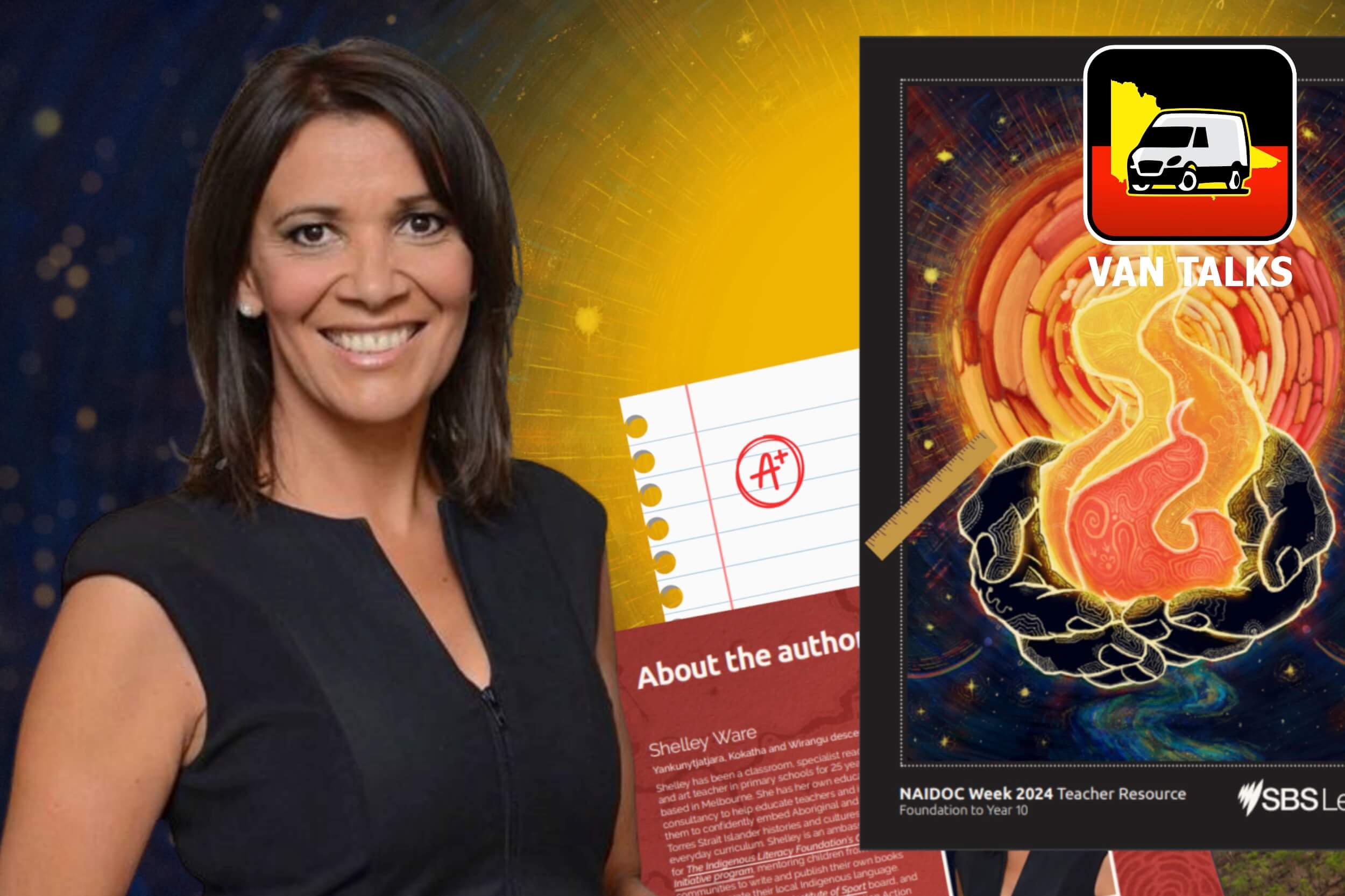
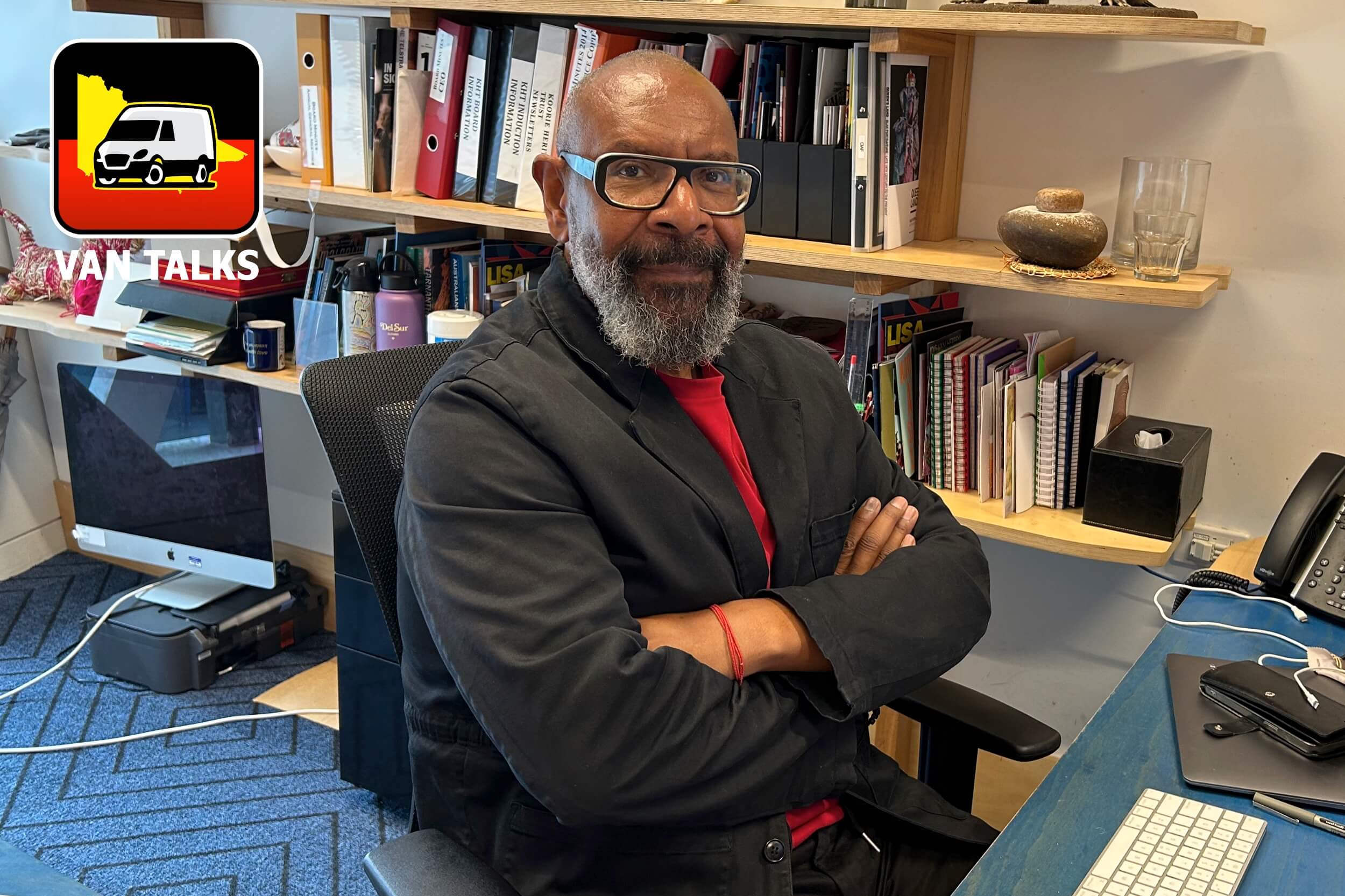
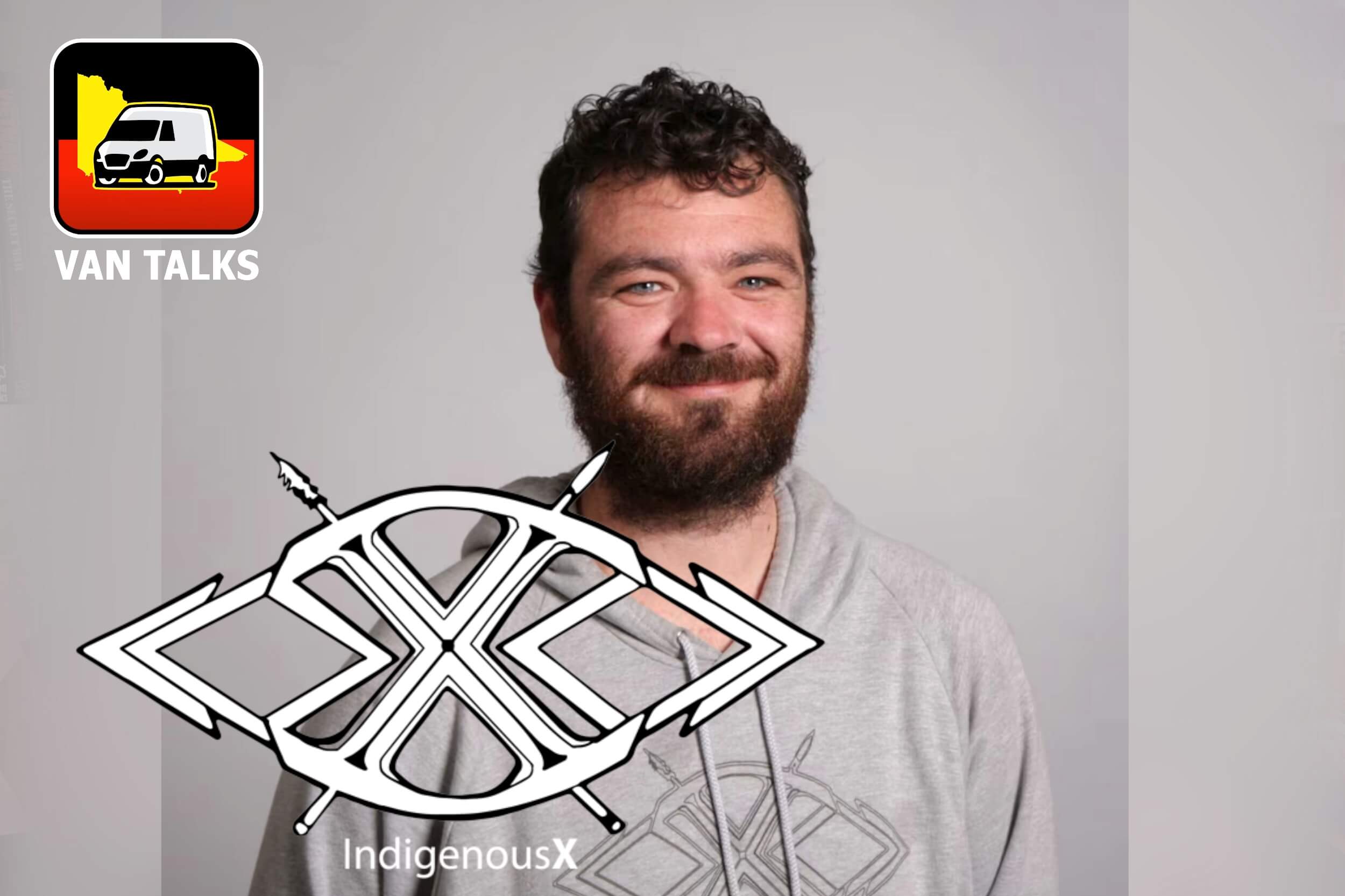
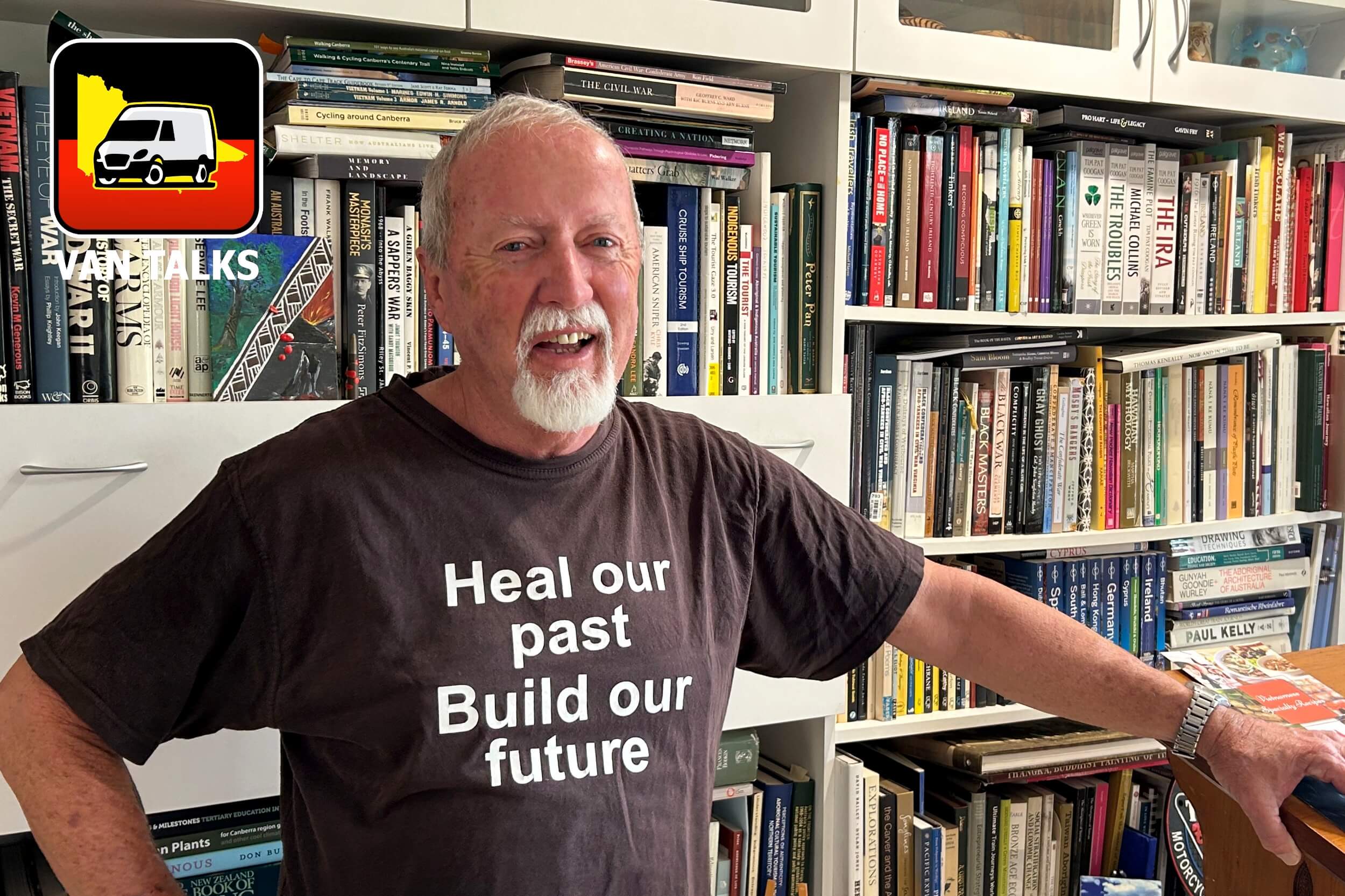
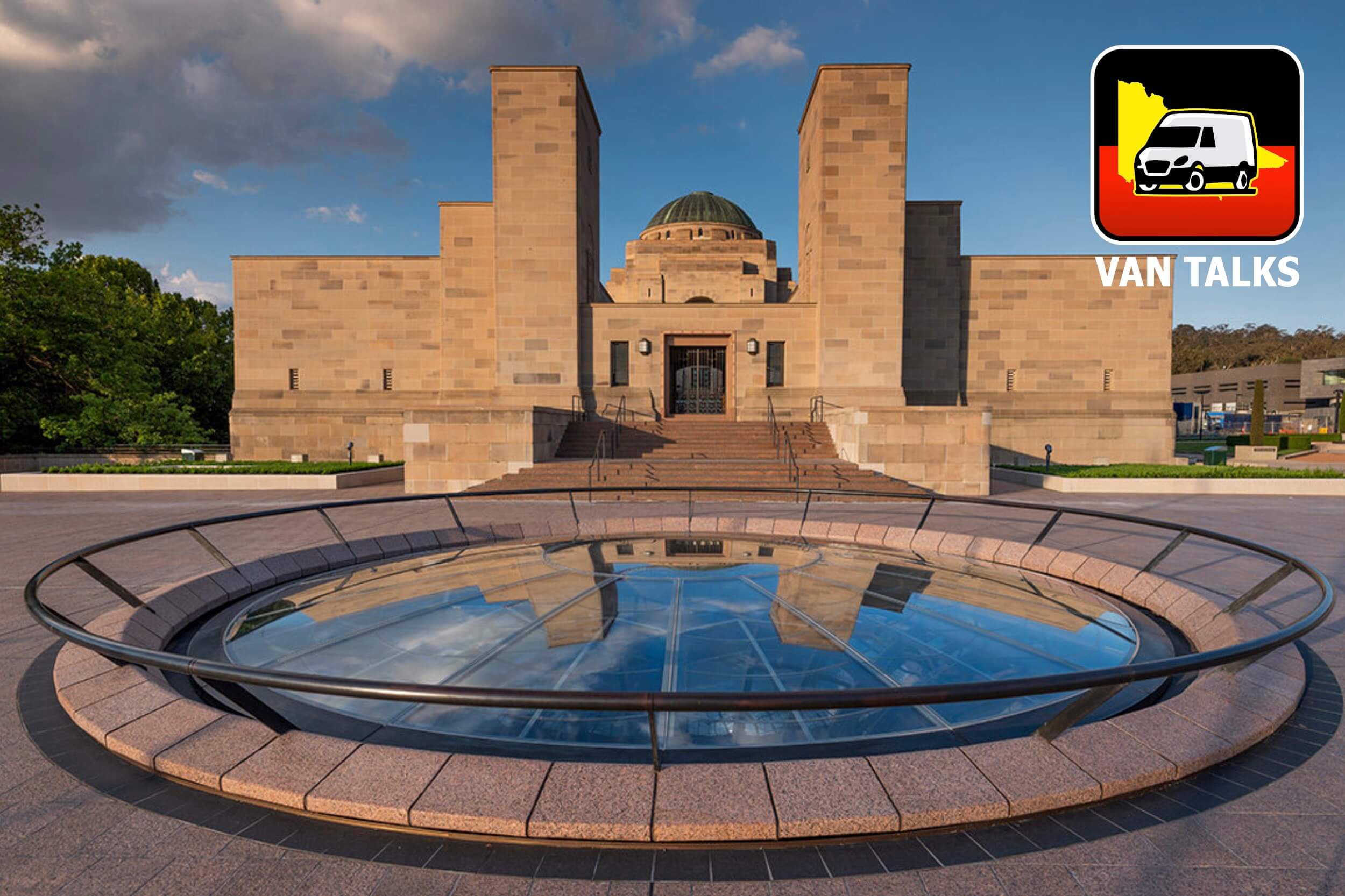

0 Comments